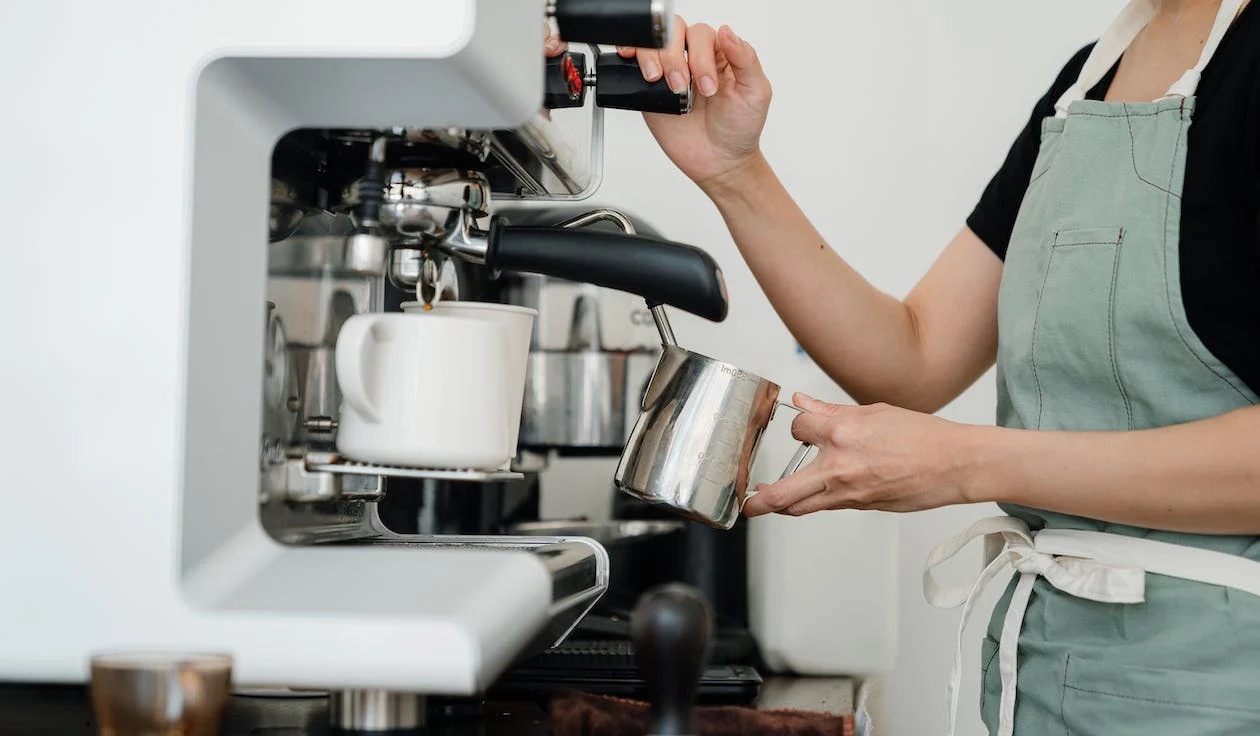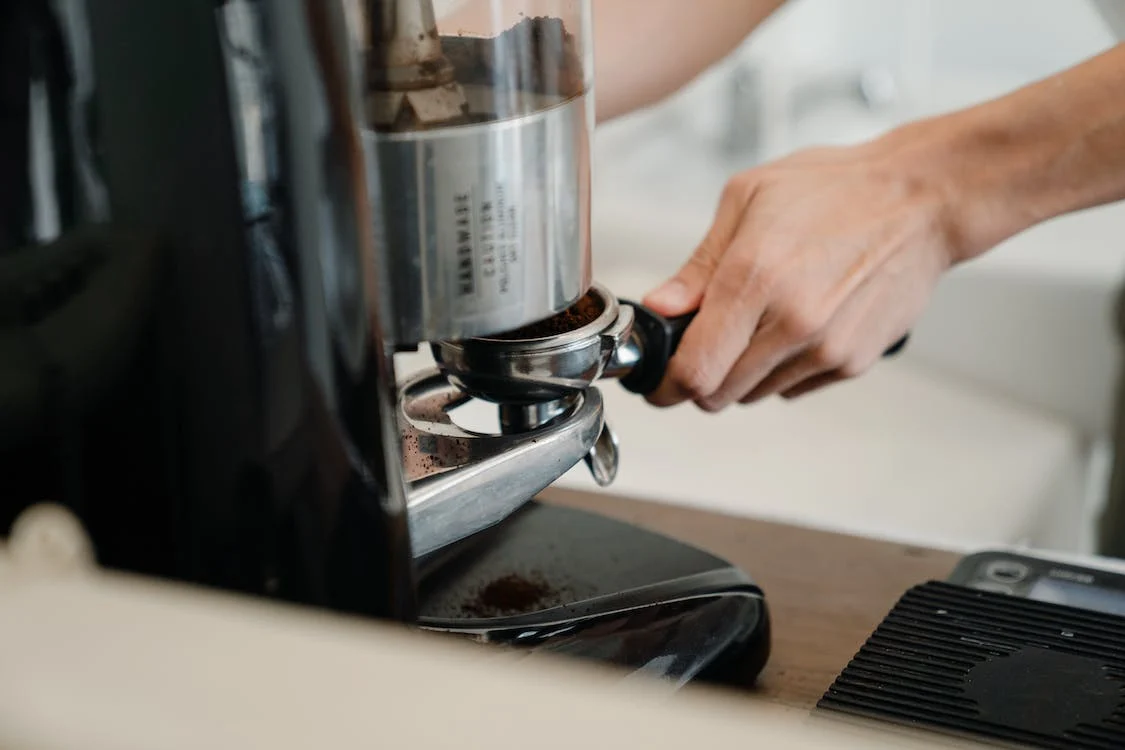If you’re a coffee lover, chances are you have already witnessed the beautiful patterns created by latte art on a cup of coffee. The visually appealing technique of latte art has a rich history that can be traced back to Italy where coffee culture first thrived. This was when Italian baristas in the 1980s experimented with coffee patterns by skillfully pouring steamed milk into espresso, playing with the milk’s consistency and texture to form all kinds of patterns, shapes, or images on the espresso’s surface. As coffee gained popularity worldwide, so did the appreciation for latte art, especially in cafes and specialty coffee shops. With milk serving as paint, and a cup of espresso as the canvas, latte art was eventually recognized as an artistic discipline that showcased a barista’s skills and creativity.
While a skilled barista is usually the one who practices this technique, this doesn’t mean that you can’t too! Whether you’re an aspiring barista, a coffee enthusiast, or simply just someone who wants to learn a relaxing art form, we’re here to give you a quick and simple beginner’s guide to get you started with the basics of latte art so you can make those delicate coffee patterns in no time!
Prepare Your Equipment, Ingredients, and Tools
But of course, before we dive into the main event, an aspiring latte artist must first gather the necessary equipment, ingredients, and tools to create a good latte art design. Here’s what you’ll need:
- Espresso Coffee Beans – Since espresso will serve as the base of your latte art masterpiece, you must choose high-quality and freshly roasted coffee beans. There are many different kinds of coffee beans with each offering a distinct flavor, so choose whatever suits your taste.
- Fresh Milk – Choosing high-quality, cold milk can positively impact the texture and taste of your latte art. Although whole milk is usually recommended because of its creaminess, you can explore and experiment with other types of milk such as almond, skim, soy, and oat milk, among others. Just remember that the fat content in the milk can impact the creaminess of the froth, so choose a milk type depending on your desired latte art texture.
- Espresso Machine – Investing in a reliable espresso machine will provide a means for you to control the temperature, pressure, and extraction time which can all help in brewing you a good shot of espresso.
- Steam Wand – Most espresso machines have a steam wand, this is essential for frothing the milk to your desired consistency as it provides the necessary control for creating microfoam. This is the fine and creamy-textured frothed milk that consists of countless microscopic bubbles.
- Steam Pitcher – You can use a stainless steel steam pitcher to steam and pour your milk. This can help in precise pouring and is easy to clean.
- Latte Art Tools – To create details for your latte art designs, you can use specialized latte art tools such as latte art pens and toothpicks.
Grind and Brew the Espresso
After having gathered the essentials, we can now proceed to the main event! It all starts with the base of our coffee which is the espresso. Here are the steps:
- Grind the coffee beans – If your espresso machine already has a grinder, all you need to do is measure at least 7-8 grams of coffee beans for one shot of espresso. [1] You can also use a burr grinder if your machine doesn’t have one or opt for grounded coffee beans instead. However, make sure that yours is a fine grind that can resemble fine sand or granulated sugar.
- Dose and tamp the ground espresso into a portafilter – In a clean and dry portafilter – the metal handle with a small basket, fill in and distribute the coffee grounds evenly. You can tap the portafilter gently on a flat surface to level it. Then, use a tamper to compress the coffee grounds while applying firm and consistent pressure of about 30 pounds to make it compact and leveled. [1] Doing so can ensure an even extraction.
- Pull the shot – Insert the portafilter into the espresso machine and lock it in place. Monitor the extraction time and wait for about 21 to 24 seconds for a standard shot. [2] After that you might notice a creamy foam on top of the shot, this is called the “crema”. Over time and with more practice, you may prepare the espresso and steam the milk at the same time to ensure that they are served at a good temperature.
Froth your Milk to Perfection
Steaming and frothing milk can take lots of practice for you to achieve that creamy and velvety texture. Make sure you have your steam wand clean and ready for the following steps:
- Pour the milk and position the steam wand – Start by pouring the cold milk into the steam pitcher. For a single latte, you can use around 10 ounces or 290 ml of whole milk. [2] You can also adjust the quantity based on how large your drink is and the capacity of your pitcher. Just make sure you make it at least 1/3 full so there is enough room for frothing. Then place the steam wand of your espresso machine right below the milk’s surface near the edge of the pitcher. This creates a whirlpool effect for effective heating and frothing.
- Start frothing and submerge the steam wand – You can now turn on the steam wand and tilt the pitcher at a slight angle to help create a swirling motion in the milk. Once it is slightly foamy, you can lower the nozzle but not let it reach the bottom. Keep it still and spinning until it reaches around 150 degrees Fahrenheit. [1] You can use a thermometer or a pitcher with a temperature sticker to accurately monitor the temperature.
- Stop frothing and remove the steam wand – Before removing the wand from the jug, turn off the steam first. You can also gently tap and swirl the pitcher to remove any bubbles on top.
Pour Frothed Milk on Top of Espresso
We’re almost there! Now it’s time to pour frothed milk on top of our shot of espresso. This can be a challenging task and you probably might not get it right the first time but don’t worry! Just follow the steps and make sure to remember them as you practice. There are two ways you can make your latte art design:
- Free pouring – Here, you slowly pour the milk directly into the hot espresso to create patterns. Popular designs that you can make with this technique include the heart, rosetta, the tulip. Factors you must consider would be the height, position, flow, and control. First, you must consider the height of the pitcher from your cup. Start high and slow by pouring around two inches above the coffee’s surface then slowly lowering it. While doing this your cup of coffee should be in a slightly tilted position and eventually straighten it as you lower down your pitcher. This affects the symmetry and the style of your design. If you want a rich white top, pour the milk directly at the center of the coffee. In terms of the flow, you start slow while your pitcher is still above the cup, then increase the flow as you go low. The lower you go, the more the crema or white foam expands. Doing this means you have to practice your control while pouring the milk.
- Etching with Latte Art Tools – For more detailed designs, you can draw directly on the espresso with your frothed milk. This usually includes the use of latte art tools like a toothpick or a latte art pen. Here, you can draw lines, shapes, text, and images with more detail.
Beginner Latte Art Designs You Can Try
Now that you know how to prepare espresso and froth milk, we’re going to the exciting part which is making your design! Here are some of the basic designs you can try as a beginner:
- Heart Design – To create one of the easiest designs, slowly begin pouring milk into the center of the cup until you see a large white circle forming on top. You can slightly wiggle your pitcher side to side to control the size. As soon as you’ve almost filled the cup, pour the milk through the white circle and through the other side of the cup to create a heart shape.
- Rosetta Design – Just like the heart design, pour your milk base in the center of the cup, until you see a dot of microfoam in the crema. With an understanding of the height, position, flow, and control, you must do a gentle back-and-forth motion with the picture as you pour the milk to create the petals of the flower design. The gentle rocking of the pitcher must be uniform and almost like a pendulum to ensure that the petals are not deformed. Remember that the petals decrease in size, so experiment with the flow of milk for each petal. The longer you pour the bigger your petal would be.
When you have already created the number of desired petals you want on your latte, lift the pitcher 2 inches above your cup and pour a thin stream of milk through the center of the petals to create the stem.
Conclusion
Mastering latte art takes time, patience, and dedication which does not happen overnight. Don’t pressure yourself into being a master and instead focus on the journey and experience of creating art! Just remember to follow our guide, do extra research, and of course lots of practice. Soon enough you would be making beautiful latte art designs for you and the others to enjoy! You can do this!
References
[1] CoffeeGeek. (2020, April 25). How To Do Latte Art – A Beginner’s Guide | CoffeeScience. Coffee Science. https://www.coffeescience.org/latte-art-beginners-guide/
[2] Zhao, J. (2023). How to Make Latte Art (with Pictures) – wikiHow. wikiHow. https://www.wikihow.com/Make-Latte-Art







